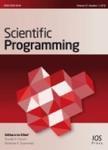版权所有:内蒙古大学图书馆 技术提供:维普资讯• 智图
内蒙古自治区呼和浩特市赛罕区大学西街235号 邮编: 010021

作者机构:Nanjing Univ Philosophy Dept Nanjing 210023 Peoples R China Xuchang Univ Sch Marxism Studies Xuchang 461000 Peoples R China Tongji Univ Mobile Source Emiss Aftertreatment Inst Shanghai 200082 Peoples R China
出 版 物:《SCIENTIFIC PROGRAMMING》 (科学程序设计)
年 卷 期:2022年第2022卷第0期
核心收录:
学科分类:08[工学] 0835[工学-软件工程] 0812[工学-计算机科学与技术(可授工学、理学学位)]
主 题:Pixels
摘 要:With the development of remote sensing technology, remote sensing image data plays an active role in the dynamic monitoring of global resource changes and land cover utilization. Remote sensing image land cover classification is an important application direction of remote sensing data;how to further improve the accuracy of remote sensing image land cover classification is very important for the effective application of remote sensing data. The traditional remote sensing image land cover classification is mainly to classify remote sensing data according to the spectral data of ground objects. However, due to the complex environment of remote sensing images and the dynamic changes of the environment, traditional classification methods based only on pixel spectral data are often unable to achieve. A satisfactory classification result is achieved. In addition, some researchers have also proposed to combine pixel neighborhood texture information to supplement spectral feature data. Although the traditional classification method based on spectral features solves the problem of time-consuming visual interpretation, to a certain extent, due to the limited semantic expression ability and poor generalization ability of the design features, the classification accuracy is still not very satisfactory. This paper mainly studies the classification method of land cover remote sensing image based on pattern recognition. This paper is based on the experimental results of remote sensing data in Nanjing Yuhuatai District in 2018 and 2019. The ground resolution of the data is 2.5 meters. Data is projected, corrected, and equalized. Half of the images covering 43.75 square kilometers are used as training samples, and the remaining 50 square kilometers are used for detection. In the classification results of this IndianPines data, OA only increased by nearly 10% to 86.2%, AA increased by 13%, r was 82.77%, and Kappa coefficient was 0.84. In the classification results of Salinas data, bot